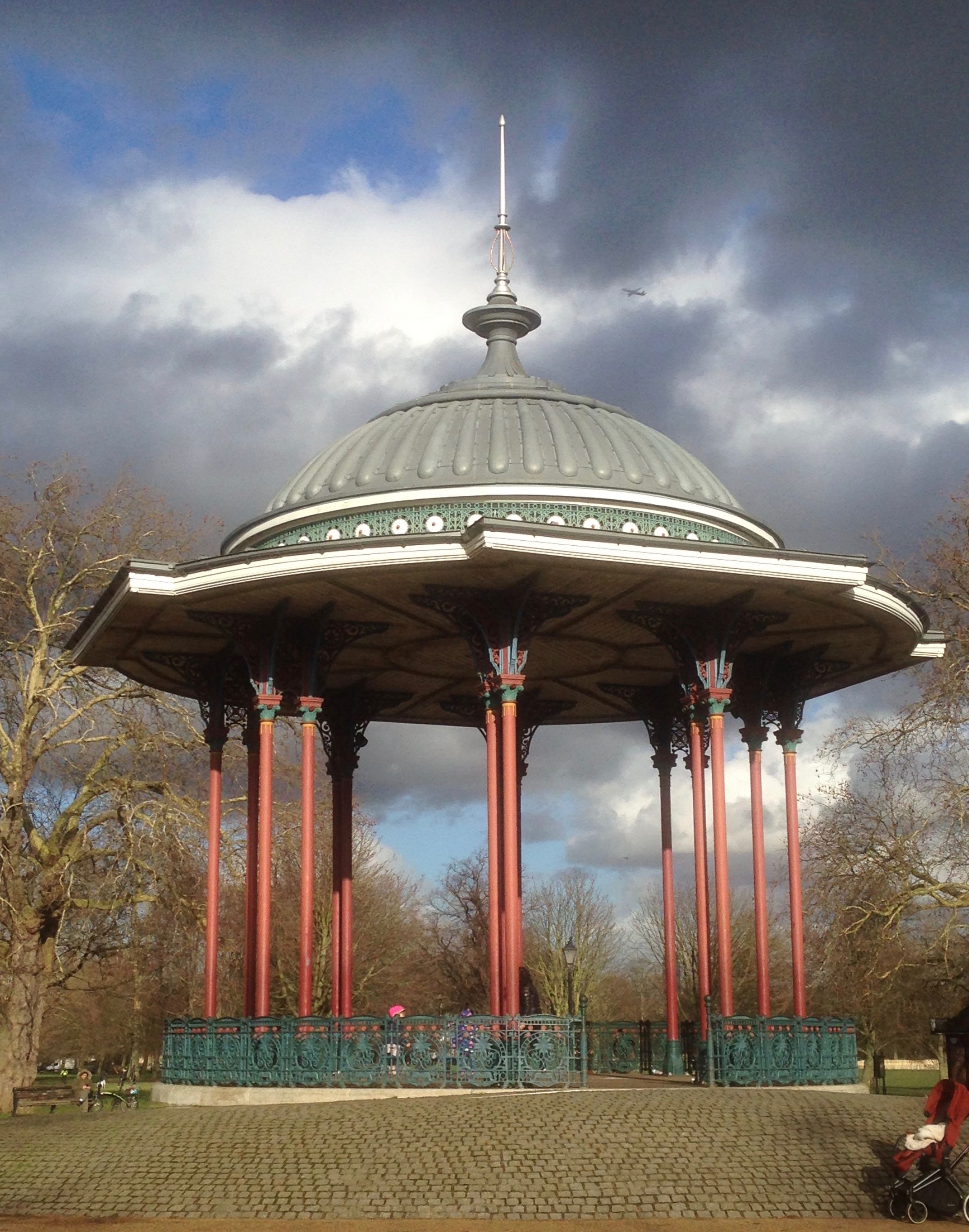
Oh for just a bit of the civic pride that built bandstands, and a wee bit of the sense of community that put on regular band concerts within them.
The Clapham Common bandstand for example, built in 1889 after the locals petitioned the London County Council. It cost £600 to erect and, twice a week – Wednesday afternoons and Sundays – one could stroll over to the common and hear a concert, presumably for free.
(Although there are still some music events laid on at the bandstand during the summer months, the main focus for performances has become the large open area in the north east corner of the Common by the Long Road. These tend to be highly-priced affairs, that exclude non-ticket holders from a large part of common land, enclosing the site with high fences and fluorescent-tabarded security. Or the recent Winterville funfair, which blocked access to a huge swather of space which is still inaccessible as Lambeth council try to help the ground recover. )
The bandstand was, apparently, used as a rock mini-venue at times in the 70s and into the 80s, including an early concert (September 1977) for erstwhile stadium-rockers Dire Straits. But it was not treated well in the latter part of the last century, and by 2003 was deemed unsafe. Credit where it’s due, Lambeth Council did put £200,000 towards its restoration, £100,000 came from the local community and a whopping £900,000 from the Heritage Lottery Fund – thank you Lotto players everywhere.
According to an information board on the Common, the structure is a copy of two other bandstands (dating from 1861) that were in the Royal Horticultural Society’s gardens in South Kensington, it is thus a great example of mid-Victorian civic architecture and, quite rightly, Grade II listed by English Heritage.

